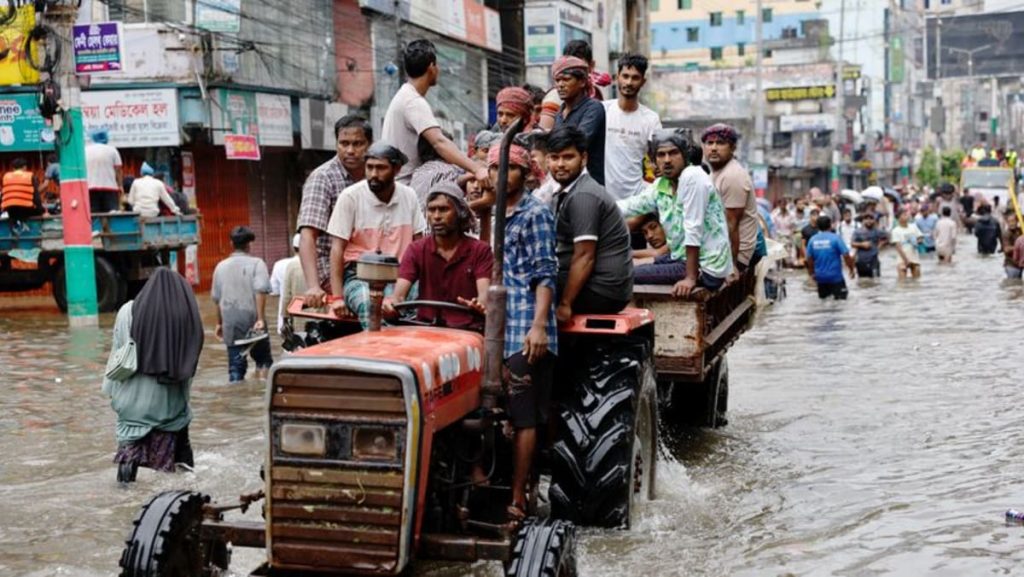Abdul Halim, a 65-year-old farmer from a village in the Comilla district in Bangladesh, found his mud hut swept away by a surge of 3-metre-high floodwater in the middle of the night. He expressed frustration with the lack of relief aid reaching his village, stating that people had to physically go close to the main road to collect supplies as aid delivery did not extend deep into the villages. This situation reflects the challenges faced by many villagers in remote areas affected by the floods.
The flooding in Bangladesh has raised suspicions among some residents that the disaster was exacerbated by the opening of dam sluice gates in neighbouring India. However, these allegations have been rejected by New Delhi. Bangladesh officials, including Yunus, have indicated that discussions with neighbouring countries have begun to prevent similar flood situations in the future. These dialogues aim to address the shared concerns of both countries regarding natural disasters and their impact on communities.
The lack of access to essential goods and safe drinking water has been a pressing issue for flood-affected villagers like Abdul Halim. The difficulties in delivering relief aid to remote areas highlight the logistical challenges faced by relief organizations and government agencies in responding to disasters on a large scale. The need for improved coordination and infrastructure to ensure aid reaches all impacted communities is evident in the experiences shared by residents in vulnerable regions.
Efforts to prevent future flood situations and mitigate the impact of natural disasters in Bangladesh involve cooperation with neighbouring countries and the development of effective disaster response strategies. The importance of cross-border communication and collaboration in addressing shared challenges such as flooding is emphasized by Yunus and other officials working on disaster preparedness and response in the region. By working together, countries can enhance their resilience and reduce the vulnerability of communities to recurring disasters.
The resilience of villagers like Abdul Halim, who have endured the loss of their homes and livelihoods due to natural disasters, reflects the strength and determination of communities facing adversity. Despite the challenges posed by flooding and inadequate relief efforts, individuals are persevering and seeking ways to rebuild and recover from the devastation. The spirit of resilience and community solidarity demonstrated by residents in flood-affected areas offers hope for a brighter future and underscores the importance of supporting vulnerable populations in times of crisis.
In conclusion, the impact of flooding in Bangladesh has highlighted the need for improved disaster response mechanisms, enhanced coordination among stakeholders, and greater investment in infrastructure to protect vulnerable communities from the devastating effects of natural disasters. Through collaboration with neighbouring countries, government agencies, and relief organizations, efforts can be made to prevent future flood situations, deliver essential aid to remote areas, and strengthen the resilience of communities facing environmental challenges. The experiences shared by individuals like Abdul Halim serve as a reminder of the importance of solidarity, compassion, and proactive measures in addressing the humanitarian needs of those affected by flooding and other disasters.


